B-24 Liberator
| B-24 Liberator | |
|---|---|
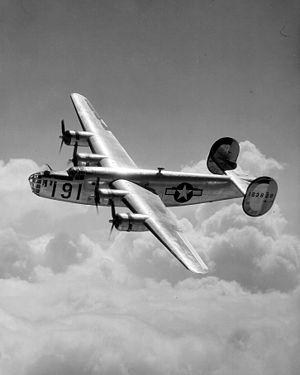 |
|
| U.S. Army Air Forces Consolidated B-24D Liberator over Maxwell Field, Alabama. | |
| Role | Heavy bomber |
| Manufacturer | Consolidated Aircraft |
| Designed by | Isaac M. Laddon |
| First flight | 29 December 1939 |
| Introduced | 1941 |
| Retired | 1945 |
| Primary users | United States Army Air Forces United States Navy Royal Air Force Royal Canadian Air Force |
| Produced | 1940-1945 |
| Number built | 18,482 |
| Unit cost | $297,627[1] |
| Variants | PB4Y Privateer XB-41 C-87 Liberator Express Consolidated R2Y Consolidated Liberator I |
The Consolidated B-24 Liberator was an American heavy bomber, built by Consolidated Aircraft. It was produced in greater numbers than any other American combat aircraft of World War II and still holds the record as the most produced U.S. military aircraft. It was used by many Allied air forces and every U.S. branch of service during the war, attaining a distinguished war record with its operations in the northern European, Pacific and Mediterranean theaters.
Often compared to the better known B-17 Flying Fortress, the B-24 was a more modern design with a higher top speed and greater range yet it had a similar bomb load and defensive armament. Nevertheless, popular opinion among aircrews and general staff tended to favor the B-17's rugged qualities above all other considerations.[2] The B-24 was notorious among American air crews for its tendency to catch fire. The placement of the B-24's fuel tanks throughout the upper fuselage and its lightweight construction, designed both to increase range and optimize assembly line production, made the aircraft vulnerable to battle damage.[3] The B-24 was more difficult to fly as well, with heavy control forces and poor formation flying characteristics. In addition to this problems with build quality and maintenance resulted in a much higher accident rate and fatality rate than the B-17[4] The B-24 nevertheless provided excellent service in a variety of roles thanks to its large payload and long range.
Contents |
Development

The Liberator originated from a United States Army Air Corps (USAAC) request in 1938 for Consolidated to produce the B-17 under license. This was part of "Project A", a program to expand American industrial capacity for production of the key components of air power.[5] After company executives including President Reuben Fleet visited the Boeing factory in Seattle, Consolidated decided instead to submit a more modern design of its own.[6] In January 1939, the USAAC, under Specification C-212, formally invited Consolidated [7] to submit a design study for a bomber with greater range, higher speed, and greater ceiling than the B-17.
The contract for a prototype was awarded in March 1939, with the requirement that a prototype be ready before the end of the year. The design was simple in concept but advanced for its time. Compared to the B-17, the proposed Model 32 was shorter and had 25% less wing area, but a six foot (1.8 m) greater wingspan and a substantially greater carrying capacity. Whereas the B-17 used 9-cylinder Wright R-1820 Cyclone engines, the Consolidated design used twin-row, 14-cylinder Pratt & Whitney R-1830 Twin Wasp radials of 1,000 hp (746 kW). The 70,547 lb (32,000 kg) maximum takeoff weight was one of the highest of the period. Consolidated also incorporated innovative features: the new design would be the first American bomber to use tricycle landing gear and it had long, thin wings with the efficient "Davis" high aspect ratio design (also used on the projected Model 31 flying boat)[8] promising to provide maximum fuel efficiency. The aircraft also had a distinctive twin tail and rudder assembly.

Wind tunnel testing and experimental programs using an existing Consolidated Model 31, a twin-engined commercial flying boat, provided extensive data on the flight characteristics of the Davis airfoil.[9]
Consolidated finished the prototype, by then known as the XB-24, and had it ready for its first flight two days before the end of 1939. Seven more YB-24 development aircraft flew in 1940 and Consolidated began preparing production tooling.[10] Early orders—placed before the XB-24 had flown—included 36 for the USAAC, 120 for the French Armée de l'Air and 164 for the Royal Air Force (RAF). Most of the first production B-24s went to Britain, including all those originally ordered by the Armée de l'Air after France collapsed in 1940. The name, "Liberator" was initially assigned by the RAF and subsequently was adopted by the USAAC as the official name for the type.[11]
Design
The B-24's spacious slab-sided fuselage (which earned the aircraft the nickname "Flying Boxcar")[12] was built around a central bomb bay that could accommodate up to 8,000 pounds of bombs. The bomb bay was divided into front and rear compartments and further divided by a central catwalk, which was also the fuselage keel beam. A universal complaint arose over the extremely narrow catwalk. The aircraft was sometimes disparaged as "The Flying Coffin" because the only entry and exit from the bomber was in the rear and it was almost impossible for the flight crew and nose gunner to get from the flight deck to the rear if they were wearing their parachutes. An unusual set of "roller-type" bomb bay doors retracted into the fuselage with a minimum of aerodynamic drag, keeping speed high over the target area.[13]
Like the B-17, the B-24 had an array of .50 caliber machine guns in the tail, belly, top, sides and nose to defend it from attacking enemy fighters. Unlike the B-17, the ball turret could be retracted into the fuselage when not in use.
Operational history
Initial deployment

Liberator GR Is in British service were the first B-24s to be used operationally. The very first use of a Liberator I in March 1941 was as a long-range transport: it was used to bring U.S. ferry pilots back from the United Kingdom.
The most important role for the first batch of the Liberator GR Is was in service with RAF Coastal Command on anti-submarine patrols in the Battle of the Atlantic.
Later in 1941, the first Liberator IIs entered RAF service. This model introduced self-sealing fuel tanks and powered gun turrets. At the same time, Consolidated added a 2 ft 7 in (79 cm) plug in the forward fuselage to create more space for crew members. The Liberator IIs were divided between Coastal Command, Bomber Command, and BOAC. Two RAF squadrons with Liberators were deployed to the Middle East in early 1942, in the first use of the Liberator as a bomber.[14]
America enters the war

The United States Army Air Forces (USAAF) took delivery of their first B-24As in 1941. Like the British, they used them as transports first. American B-24s entered combat in June 1942. On June 6, in the Pacific, four B-24s staging through Midway tried to attack Wake Island (they could not find the target).[15] On 12 June, thirteen B-24s flying from Egypt attacked the Axis-controlled oil fields and refineries around Ploieşti, Romania.
Over the next three years, B-24 squadrons deployed to all theaters of the war: Africa, Europe, India, the Atlantic, and the Pacific. In the Pacific, the B-24 was designated the standard heavy bomber to simplify logistics, replacing the shorter-range B-17.
Later development and production
Continued development work by Consolidated produced a handful of transitional B-24Cs with turbocharged instead of supercharged engines. The turbocharged engines led to the flattened oval nacelles that distinguished all subsequent Liberator models.
The first mass-produced model was the B-24D (or Liberator III in British service), in service in early 1943. It had turbocharged engines and increased fuel capacity. Three more 0.50 caliber (12.7 mm) machine guns brought the defensive armament up to ten machine guns. At 59,524 lb (27,000 kg) maximum takeoff weight, it was one of the heaviest aircraft in the world; comparable with the British "heavies" the Stirling, Lancaster and Halifax.

B-24 production increased at an astonishing rate through 1942 and 1943. Consolidated tripled the size of its plant in San Diego and built a large new plant outside Fort Worth, Texas. More B-24s were built by Douglas in Tulsa, Oklahoma. North American built a plant in Dallas, Texas, which produced B-24Gs and B-24Js. None of these were minor operations, but they were dwarfed by the vast new greenfield factory built by Ford at Willow Run near Detroit, which opened in August 1942 and began mass production in August 1943. This was the largest factory in the United States, and the largest anywhere outside the USSR. It had the largest assembly line in the world (330,000 m² or 3,500,000 ft²) at the time of completion. At its peak Willow Run produced 428 B-24s per month. Many pilots slept on cots at Willow Run while waiting for 'their' B-24s to roll off the assembly line.[16]
Each of the B-24 factories was identified with a production code: Consolidated/San Diego, CO; Consolidated/Fort Worth, CF; Ford/Willow Run, FO; North American, NT; and Douglas/Tulsa, DT.
In 1943, the model of Liberator considered by many the "definitive" version was introduced. The B-24H was 10 inches (25 cm) longer, had a powered gun turret in the nose to reduce vulnerability to head-on attack and was fitted with an improved bomb sight, autopilot and fuel transfer system. Consolidated, Douglas and Ford all manufactured the B-24H, while North American made the slightly different B-24G. All five plants switched over to the almost identical B-24J in August 1943. The later B-24L and B-24M were lighter weight versions and differed mainly in defensive weaponry.

As the war continued, the complexity of servicing the B-24 grew greater and greater. The B-24s made by the different companies were slightly different, so repair depots had to stock many different parts to support various B-24 models. Fortunately, this problem was eased in the summer of 1944, when North American, Douglas, and Consolidated/Fort Worth stopped making B-24s, leaving only the Consolidated plant in San Diego and the Ford plant in Willow Run.
In all, 18,482 B-24s were built by September 1945. Twelve thousand saw service with the USAAF. The U.S. Navy operated about 1,000 PB4Y-1s and almost 800 PB4Y-2 Privateers, which were derived from the B-24. The Royal Air Force flew about 2,100 B-24s in 46 bomber groups and 41 squadrons, the Royal Canadian Air Force 1,200 B-24Js, and the Royal Australian Air Force (RAAF) 287 B-24Js, B-24Ls and B-24Ms. (Liberators were the only heavy bomber used by the RAAF in the Pacific.) Two squadrons of the South African Air Force deployed in the Mediterranean flew B-24s.
Strategic bombing
The B-24 was one of the workhorse bombers of the U.S. Eighth Air Force in the Combined Bomber Offensive against Germany. Thousands of B-24s, flying from bases in England, dropped hundreds of thousands of tons of bombs and incendiaries on German military, civilian and industrial targets.
B-24s of the Ninth Air Force, operating from Africa and Italy, and the Fifteenth Air Force, operating from Italy, also took a major role in strategic bombing. Thirteen of the Fifteenth AF's eighteen bombardment groups flew B-24s.
The first B-24 lost over German territory occurred on 26 February 1943. By a cruel twist of fate there had been eleven men aboard the aircraft. For some time newspapers had been requesting permission for a reporter to go on one of the missions, and on this date Robert B. Post, and five other reporters of the The New York Times were granted permission. Mr Post was the only reporter assigned to a B-24 equipped group, the 44th Bomb Group, and flew in the B-24 41-23777 Maisey on Mission No. 37 to Bremen. Intercepted just short of the target the B-24 came under attack from JG 1s Messerschmitt Bf 109s. Leutnant Heinz Knoke (who finished the war with 31 kills) shot down the Liberator, only two of the 11 men survived. Neither was Post. Knoke reported:
The fire spread out along the right wing. The inboard propeller windmilled to a stop. And then, suddenly, the whole wing broke off. At an altitude of 900 metres there was a tremendous explosion. The bomber had disintegrated. The blazing wreckage landed just outside Bad Zwischenahn airfield[17]
A total of 178 B-24s carried out the famous second attack on Ploieşti, Operation Tidal Wave, on 1 August 1943.
Bomber Command did not use B-24s as bombers over Europe. However, 223 Squadron of Bomber Command’s 100 (Bomber Support) Group was equipped with twenty Liberators. These planes carried electronic jamming equipment to counter enemy radar.
Other Roles
The B-24's long operating range made it suitable for other duties including maritime patrol, anti-submarine patrol, reconnaissance, tanker, cargo hauler, and personnel transport. Winston Churchill used a refurbished Liberator II as his personal transport aircraft.
Maritime Patrol
The B-24 made a massive contribution to Allied victory in the Battle of the Atlantic against German U-boats. The decision to allocate some Liberator Is to Coastal Command in 1941 produced immediate results. The Very Long Range (VLR) Liberators "almost doubled the reach of Britain's maritime reconnaissance force". [18] This added range enabled Coastal Command patrols to cover the Mid-Atlantic gap, where U-boats had operated with near impunity. [19]
For twelve months, No. 120 Squadron RAF of Coastal Command, with its handful of much patched and modified early model Liberators, supplied the only air cover for convoys in the Atlantic Gap.
The Liberator was the only aircraft with the range for this. The VLR Liberators sacrificed some armor and often some gun turrets to save weight while adding extra fuel in bomb bay tanks. Liberator Is were equipped with ASV Mark II radar. Radar and the Leigh light gave them the ability to hunt U-boats by day and night.
They were operated from both sides of the Atlantic with the RCAF to the west and the RAF from the UK and Iceland. This role was dangerous, especially after many U-boats were armed with extra Flak guns and adopted a policy of staying on the surface to fight.
The sudden and decisive turning of the Battle of the Atlantic in the Allies' favor in May 1943 was the result of many factors. However, it was no accident that it coincided with the long delayed arrival of many more VLR Liberators for maritime patrol. Liberators were credited in full or part with 72 U-boat kills.
In addition to very long range patrols, the B-24 was vital for patrols of a radius less than 1,000 miles (1,600 km), in both the Atlantic and in the Pacific where B-24s and PB4Y-1s took a heavy toll of Japanese shipping. A total of 977 USN PB4Y-1s were used in the Pacific Theater in VB and VPB squadrons.
- See also: PB4Y Privateer
Transport
Early model Liberators were used as unarmed long-range cargo carriers. They flew between Britain and Egypt (with an extensive detour around Spain over the Atlantic) and were used in the evacuation of Java. Liberator IIs were converted for this role and used by the British Overseas Airways Corporation (BOAC) for trans-Atlantic service and other assorted long-range transport duties. This variant was designated LB-30A by the USAAF.[20]
In early 1942, a B-24 Liberator damaged in an accident was converted into a cargo transport aircraft by elimination of the transparent nose and installation of a flat cargo floor. In April 1942, the C-87 Liberator Express transport version entered production at Fort Worth. The C-87 had a large cargo door, less powerful supercharged engines, no gun turrets, a floor in the bomb bay for freight and side windows. The navigator's position was relocated behind the pilot. Early versions were fitted with a single .50 Browning machine gun in the tail, and a few C-87s were also equipped with two .50 fixed machine guns in the nose, operable by the pilot, though these were also eventually eliminated. A more elaborate VIP transport, the C-87A, was also built in small numbers.
The C-87 was also designated the RY-2 or Liberator Cargo VII. The U.S. only made about 300 C-87s but they were nevertheless the backbone of the Army Air Force’s heavy transport operation. The C-87 flew in many theaters, including much hazardous duty in flights from Labrador to Greenland and Iceland in the North Atlantic. The aircraft proved extremely vulnerable to icing conditions, and was prone to fall into a spin with even small amounts of ice collected on the Davis wing.
In the China Burma India Theater (CBI), the C-87 was used to transport cargo and fuel over the Hump from India to China. The C-87 was not popular with either the military or the civilian transport crews assigned to fly them. The aircraft had a distressing habit of losing all cockpit electrical power on takeoff and landings, while engine power and reliability with the less-powerful superchargers often left much to be desired. The plane was designed as a bomber that dropped its loads while airborne. So the C-87's nose gear was not designed for landing with heavy loads, and frequently collapsed from the strain. Fuel leaks from the transport's hastily-modified fuel system were a common occurrence. In his autobiography, Fate is the Hunter, author Ernest K. Gann reported, while flying cargo in India, he barely avoided crashing a severely overloaded C-87 into the Taj Mahal. As Douglas C-54 transports became available, the C-87 was rapidly phased out of service.
The USAAF also converted 218 B-24Ds and B-24Es into C-109 tankers. These tankers were used in all theaters but they were most heavily employed transporting fuel in the CBI theater. C-109s flew from India to B-29 bases in China. With all armor and military equipment removed to save weight, a C-109 could carry almost 2,905 gal (11,000 L) of fuel, over 22,000 lb (10,000 kg). However, while a combat-loaded B-24 could safely take off with room to spare from a 6,000-foot (1,800 m) runway, a loaded C-109 required every foot of such a runway to break ground, and crashes were not uncommon. With its forward fuel tank filled to capacity, the C-109 tanker version proved to be longitudinally unstable while airborne as well.
The B-24 was also used heavily in the Pacific after the war to transport cargo and supplies during the rebuilding of Japan, China, and the Philippines.
In addition, a large number of unmodified B-24s were pressed into transport duties. Qantas Empire Airways used Liberators on the Perth-Colombo route, at the time the longest non-stop route in the world at 3,580 miles, until they were replaced by Avro Lancastrians.
Variants and conversions
U.S. Army Air Force Variants
- XB-24 (Consolidated Model 32)
- Designed in 1938 as an improvement on the B-17 Flying Fortress, at the request of the Army Air Corps. It had a wing specially designed for a high aspect ratio, tricycle landing gear, and twin vertical stabilizers. The XB-24 was ordered in 1939 March, and first flew on 29 December 1939. (Total: one)
- YB-24/LB-30A Preproduction prototypes
- Six examples were sent to Great Britain under lend-lease, under the designation LB-30A.
- B-24
- Service test version of the XB-24, ordered on 27 April 1939, less than 30 days after the XB-24 was ordered, before the XB-24 design was complete. A number of minor modifications were made: elimination of leading edge slots, addition of de-icing boots. (Total: seven; only one used for actual testing)

- B-24A/LB-30B
- Ordered in 1939, the B-24A was the first production model. Due to the need for heavy bombers, the B-24A was ordered before any version of the B-24 flew. The main improvement over the XB-24 was improved aerodynamics, which led to better performance. Some sent to Great Britain under Lend Lease as LB-30B. (Total: 38,20 LB-30Bs, nine B-24Cs)
- XB-24B
- When the XB-24 failed to reach its projected top speed, the Pratt & Whitney R-1830-33 radials rated at 1,000 hp (746 kW) it carried were replaced with R-1830-41 turbo-supercharged radials rated at 1,200 hp (895 kW), increasing its top speed by 37 mph (59 km/h). The addition of the turbo-superchargers made the engine cowlings elliptical. The XB-24B version also lacked the engine slots of the original. (Total: one converted XB-24)
- B-24C
- Conversion of the B-24A using turbo-supercharged R-1830-41 engines. To hold the supercharger and the intercooler intake, the cowlings were made elliptical and the new items added on the sides. The tail air gunner position was improved by adding an Emerson A-6 power turret with twin .50-caliber (12.7 mm) machine guns; a Martin power turret was added to the forward fuselage. (Total: nine converted B-24As)
- B-24D
- First model produced on a large scale; ordered from 1940 to 1942, as a B-24C with better engines (R-1830-43 supercharged engines). During the production run, the tunnel gun in the belly was replaced by a remote-sited Bendix belly turret; this was later replaced by a Sperry ball turret. In late B-24Ds, 'cheek' guns were added. (Total: 2696, 2381 Consolidated, San Diego; 305 Consolidated, Fort Worth, ten Douglas, Tulsa, Oklahoma). One famous B-24D was the Lady Be Good which was a basis for the TV movie Sole Survivor (1970 film).
- B-24E
- A slight alteration of the B-24D built by Ford, using R-1830-65 engines. Unlike the B-24D, the B-24E retained the tunnel gun in the belly. The USAAF used the B-24E's primary as training aircraft since this model was not current in armaments and other technology as the aircraft being produced by Consolidated / San Diego (CO). Ford also built sub-assemblies for Douglas; these sub-assemblies were identical to Ford-built B-24Es, except that they used the same engines as the B-24D (R-1830-43 radials). These sub-assemblies were called PK ships and were shipped by truck from Willow Run to the final assembly in Tulsa, Oklahoma. (Total: 801)
- XB-24F
- A prototype made to test thermal de-icers, instead of the standard inflatable rubber "boots." (Total: one converted B-24D)
- B-24G
- Sperry ball turret, three .50 caliber- (12.7 mm) machine guns in nose. All B-24Gs were built by North American Aviation, which was contracted in 1942. (Total: 25)
- B-24G-1
- Modified Emerson A-6 tail turret in nose instead of two- three .50 caliber (12.7 mm) machine guns in earlier models. The B-24G-1 was based on the design of the B-24H (Total: 405)
- B-24H
- Because of obvious vulnerability of the B-24 to head-on attack, the B-24H design made by Ford used a nose turret, generally a modified Emerson A-6 tail turret. The entire aircraft was redesigned to better fit the turret; 50 airframe changes were made, including a redesigned bombardier compartment. The tail turret was given larger windows for better visibility, the top turret a higher bubble, and the waist gunner positions were offset, to reduce their interference during battle. (Total: 3100)

- B-24J
- The B-24J was very similar to the B-24H, although the defensive improvements made in the B-24H were not incorporated in the B-24J. The B-24J featured an improved autopilot (type C-1) and a bombsight of the M-1 series. B-24H sub-assemblies made by Ford and constructed by other companies and any model with a C-1 or M-1 retrofit, were all designated B-24Js. (Total: 6678)
- XB-24K
- An experimental aircraft, made by Ford by splicing a B-23 Dragon tail empennage onto a B-24D airframe. The aircraft was more stable and had better handling than other models, but changing the B-24 design was too expensive to do at the time. However, the XB-24K was the ancestor of the Navy's PB4Y-1. (Total: one converted B-24D)
- B-24L
- Because of the immense weight of the B-24J, the Army pushed for a lighter version. In the B-24L, the ball turret was replaced by a floor ring mount with two .50 caliber (12.7 mm) machine guns, and the A-6B tail turret by an M-6A. In later aircraft, no tail armament was installed, and when it arrived at its airfield, either an A-6B, an M-6A, or a dual-mount manual .50-caliber (12.7 mm) gun was field-installed. (Total: 1667)
- B-24M
- An enhancement of the B-24L with further weight-saving devices. The B-24M used a more lightweight version of the A-6B tail turret; the waist gunner positions were left open. For better visibility, the windshield was replaced by a "knife-edge" dual pane versions. The B-24M became the last production model of the B-24; a number of the B-24s built flew only the course between the factory and the scrap heap. (Total: 2593)
- XB-24N
- A redesign of the B-24J, made to accommodate a single tail. It also featured improved nose and tail turrets. While 5168 B-24Ns were ordered, World War II ended and there was no longer any need for them. (Total: one)
- YB-24N
- Pre-production service test version of the XB-24N. (Total: seven)
- XB-24P
- A modified B-24D, made by Sperry Gyroscope Company to test airborne fire control systems. (Total: one converted B-24D)
- XB-24Q
- A General Electric conversion of the B-24L, using radar-controlled tail turrets. (Total: one converted B-24L).
- XB-41
- Because there were no fighters capable of escorting bomber formations on deep strike missions early in World War II, the Army authorized tests for heavily armed bombers to act as escorts for bombing missions. It was completed in 1942. The results of 1943 testing were very negative and the project was quickly cancelled. Performance changed drastically with the addition of more turrets. The escorts were also unable to keep up with bomber formations once the bombs had been dropped.
The XB-41 had 14, .50-caliber (12.7 mm) machine guns, through the addition of a Bendix chin turret and a dorsal Martin power turret on the mid-fuselage. (Total: one converted B-24D) - AT-22 or TB-24
- C-87 used for flight engineer training.
-
- RB-24L
- Developed for training B-29 gunners on an identical remote gun system installed on a B-24L.
- TB-24L
- As with the RB-24L, but with additional radar equipment.

- C-87 Liberator Express
- Passenger transports with accommodation for 20 passengers.
-
- C-87A
- VIP transports with R-1830-45 instead of -43 engines and sleep accommodations for 16 passengers.
- C-87B
- Projected armed transport variant with nose guns, dorsal turret, and ventral tunnel gun; never produced.
- C-87C
- U.S. Army Air Force/Air Force designation for the RY-3.
- XC-109/C-109
- Tankers with specialized equipment to help prevent explosions, used to ferry fuel from India to China to support initial B-29 raids against Japan.
- XF-7
- Photographic reconnaissance variant developed from the B-24D.
- F-7
- Photographic reconnaissance variant developed from the B-24H; -FO block.
- F-7A
- Photographic reconnaissance variant developed from the B-24J; three cameras in the nose and three in the bomb bay.
- F-7B
- Photographic reconnaissance variant developed from the B-24J; six cameras in the bomb bay.
- PB4Y-1
- B-24D with different nose turret for U.S. Navy. Designation later applied to all G, J, L and M models received by the U.S. Navy.[22]
-
- PB4Y-1P
- Photographic reconnaissance variant developed from the PB4Y-1.
- PB4Y-2 Privateer
- See Main Article
- RY-1
- U.S. Navy designation for the C-87A.
- RY-2
- U.S. Navy designation for the C-87.
- RY-3
- Transport variant of the PB4Y-2.
British nomenclature and sub-variants

- Liberator B Mk I
- B-24A (Total: 20), used in British Coastal Patrol and Defense Squadrons.
- Liberator B Mk II
- The first combat ready B-24. The modifications included a three foot nose extension as well as a deeper aft fuselage and wider tailplane – there was no direct B-24 equivalent but similar to the B-24C - built to meet British specifications with British equipment and armament. A small series of B Mk IIs were reconstructed as unarmed transports, designated the LB-30 with the USAAF. (Total production: 165)
- Liberator B Mk III
- B-24D variant with single .303 Browning machine gun in the nose, two in each beam position, and four in a Boulton Paul tail turret similar to that on the Lancaster, as well as, other British equipment. The Martin dorsal turret was retained. (Total: 156)
-
- Liberator B Mk IIIA
- Lend-Lease B-24Ds with American equipment and weapons.
- Liberator B Mk IV
- Reserved for the B-24E, but there is no record of the RAF actually receiving any.
- Liberator B Mk V
- B-24D modified for extra fuel capacity at the cost or armor, with the same armament fit as the Liberator Mk III.
- Liberator B Mk VI
- B-24Hs in RAF service fitted with Boulton Paul tail turrets, but retaining the rest of their armament.
- Liberator B Mk VIII
- RAF designation for B-24Js.
- Liberator GR Mk V
- B-24D modified by RAF Coastal Command for the anti-submarine role with search radar and Leigh Light. Some were fitted with eight zero-length rocket launchers, four on each wing.
- Liberator GR Mk VI
- B-24G/H/J type used as a long-range general reconnaissance aircraft by RAF Coastal Command.
- Liberator GR Mk VIII
- B-24J modified by RAF Coastal Command for the anti-submarine role.
- Liberator C Mk VI
- Liberator B Mk VIII converted for use as a transport.
- Liberator C Mk VII
- British designation for C-87.
- Liberator C Mk VIII
- Liberator G Mk VIII converted for use as a transport.
- Liberator C Mk IX
- RAF designation for the RY-3/C-87C
Operators

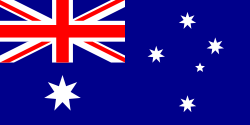 Australia
Australia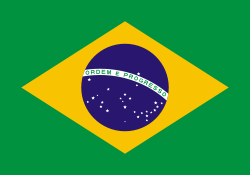 Brazil
Brazil Canada
Canada Republic of China
Republic of China Czechoslovakia
Czechoslovakia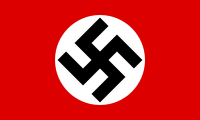 Germany
Germany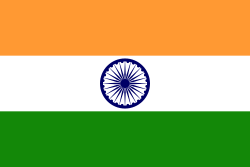 India
India Italy
Italy Netherlands
Netherlands New Zealand
New Zealand Poland
Poland Portugal
Portugal Soviet Union
Soviet Union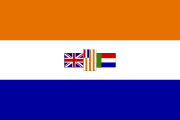 South Africa
South Africa Turkey
Turkey United Kingdom
United Kingdom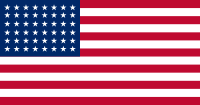 United States
United States
Survivors

A large number of surviving airframes exist both in flyable condition as well as in static display condition in museum collections worldwide. One of these, Indian Air Force HE-771 was retired by the IAF and stored at Poonah. It was donated to Lynn Garrison’s American Aerospace Museum in California, during 1968, along with another example for Strategic Air Command’s museum in Nebraska. The program saw these two aircraft flying back together. The IAF offered to prepare the B-24 for ferry flight at a cost of $23,000 American. Garrison ended up in Ireland, doing the film Richthofen & Brown during 1969 and declined the aircraft, passing it along to the RAF. Somehow it ended up in Florida.
Specifications (B-24J)

Data from Quest for Performance[23]
General characteristics
- Crew: 7-10
- Length: 67 ft 8 in (20.6 m)
- Wingspan: 110 ft 0 in (33.5 m)
- Height: 18 ft 0 in (5.5 m)
- Wing area: 1,048 ft² (97.4 m²)
- Empty weight: 36,500 lb (16,590 kg)
- Loaded weight: 55,000 lb (25,000 kg)
- Max takeoff weight: 65,000 lb (29,500 kg)
- Powerplant: 4× Pratt & Whitney R-1830 turbosupercharged radial engines, 1,200 hp (900 kW) each
- Zero-lift drag coefficient: 0.0406
- Drag area: 42.54 ft² (3.95 m²)
- Aspect ratio: 11.55
Performance
- Maximum speed: 290 mph (250 knots, 470 km/h)
- Cruise speed: 215 mph (187 knots, 346 km/h)
- Stall speed: 95 mph (83 knots, 153 km/h)
- Combat radius: 2,100 mi (1,800 NM, 3,400 km)
- Ferry range: 3,700 mi (3,200 NM, 6,000 km)
- Service ceiling 28,000 ft (8,500 m)
- Rate of climb: 1,025 ft/min (5.2 m/s)
- Wing loading: 52.5 lb/ft² (256 kg/m²)
- Power/mass: 0.0873 hp/lb (144 W/kg)
- Lift-to-drag ratio: 12.9
Armament
- Guns: 10× .50 in (12.7 mm) M2 Browning machine guns in 4 turrets and two waist positions
- Bombs:
- Short range (˜400 mi): 8,000 lb (3,600 kg)
- Long range (˜800 mi): 5,000 lb (2,300 kg)
- Very long range (˜1,200 mi): 2,700 lb (1,200 kg)
Notable B-24 crew
- Don Herbert, television pioneer "Mr. Wizard", flew 56 missions as a Liberator pilot over Northern Italy, Germany, and Yugoslavia, winning the Distinguished Flying Cross.
- American Senator and 1972 presidential candidate George McGovern served as a B-24 pilot in missions over Italy as a member of the 455th Bomb Group of the Fifteenth Air Force; his wartime exploits and some of the characteristics of the B-24 are the focus of Stephen Ambrose's book The Wild Blue.
- Brigadier General Jimmy Stewart USAF Reserve, flew B-24s as commanding officer of the 703rd BS, 445th BG out of RAF Tibenham, UK, before a promotion to operations officer of the 453rd BG. From 1943–44, Stewart flew 20 combat missions as a pilot, including one over Berlin. Stewart's leadership qualities were highly regarded; the men who served under him praised his coolness under fire. He entered service as a private in early 1941 and rose to the rank of lieutenant colonel by 1945.
- Former Speaker of the House, Jim Wright, served as a B-24 bombardier in the Pacific. He recounts his experience in his book The Flying Circus: Pacific War – 1943 – as Seen Through a Bombsight.
Popular culture
- The book One Damned Island After Another (1946) contains the official history of the 7th Bomber Command of the Seventh Air Force. It describes B-24 operations in the Central Pacific. B-24s from the Seventh Air Force were the first B-24s to bomb the Japanese home islands.
- The story of the "Lady Be Good" inspired a television movie titled The Sole Survivor (1970 film), with a B-25 Mitchell playing the B-24D role.
- In the young adult novel Under a War-Torn Sky, the main character Henry Forester co-pilots Out of the Blue, a U.S. B-24 Liberator serving in the Royal Air Force.
See also

- H2X radar
- Operation Aphrodite
Related development
- B-32 Dominator
- C-87 Liberator Express
- C-109 Liberator Express
- PB4Y Privateer
- XB-41 Liberator
- Preproduction B-24
- Consolidated Liberator I
- Consolidated R2Y
Comparable aircraft
- Avro Lancaster
- B-17 Flying Fortress
- Focke-Wulf Fw 200
- Handley-Page Halifax
- Junkers Ju 290
- Petlyakov Pe-8
- Piaggio P.108B
- Short Stirling
- Vickers Warwick
Related lists
- List of bomber aircraft
- List of military aircraft of the United States
References
Notes
- ↑ Consolidated B-24 Liberator
- ↑ Birdsall 1968, p. 3.
- ↑ Winchester 2004, p. 56.
- ↑ USAAF X360.33 "B-24 as Accident producer" "The extensive use of the B-24 is inconsistent with the blunt fact that it is the most extravagant killer of any airplane in the AAF. Since Pearl Harbor through September 1944, B-24 accidents in the U.S. have resulted in 2,188 fatalities. In the first 9 months of 1944. B-24s did only 6% of total flying in the U.S. but accounted for 26% of all fatalities. They flew 5% less than B-17's but had 105% more fatalities and 85% more wrecks."
- ↑ Green 1975, p. 83.
- ↑ Taylor 1969, p. 462.
- ↑ Baugher, Joe. "The Consolidated XB-24." USAAC/USAAF/USAF Bombers. Retrieved: 16 February 2007.
- ↑ Donald 1997, p. 266.
- ↑ Birdsall 1968, p.40.
- ↑ Wagner 1968, p. 127–128.
- ↑ Taylor 1968, p. 463.
- ↑ A Brief History of the 44th Bomb Group
- ↑ Green 195, p. 84.
- ↑ Birdsall 1975, p. 5.
- ↑ Lord 1967, p. 279.
- ↑ Nolan, Jenny. (compiled).Willow Run and the Arsenal of Democracy The Detroit News
- ↑ Weal 2006, p. 16.
- ↑ Green 1975, p. 85.
- ↑ Winchester 2004, p. 57.
- ↑ Taylor 1968, p. 463.
- ↑ CAF's "Diamond Lil" back to B-24A configuration
- ↑ Baugher, Joe. American Military Aircraft. 18 August 1999. Consolidated PB4Y-1. Retrieved: 19 August 2007.
- ↑ Loftin, L.K. Jr. Quest for Performance: The Evolution of Modern Aircraft. NASA SP-468. [1]. Retrieved: 22 April 2006.
Bibliography
- Birdsall, Steve. The B-24 Liberator. New York: Arco Publishing Company, Inc., 1968. ISBN 0-668-01695-7.
- ____________. B-24 Liberator In Action (Aircraft number 21). Carrollton, Texas: Squadron/Signal Publications, Inc., 1975. ISBN 0-89747-020-6.
- ____________. Log of the Liberators. New York: Doubleday, 1973. ISBN 0-385-03870-4.
- Blue, Allan G. The B-24 Liberator, A Pictorial History. Shepperton, Surrey, UK: Ian Allan Ltd., 1976. ISBN 0-7110-0630-X.
- Bowman, Martin. Combat Legend: B-24 Liberator. Shrewsbury, UK: Airlife Publishing Ltd., 2003. ISBN 1-84037-403-9.
- _____________. The B-24 Liberator 1939-1945. Norwich, Norfolk, UK:Wensum Books Ltd., 1979. ISBN 0-903619-27-X.
- Currier, Donald R. Lt. Col. (Ret). 50 Mission Crush. Shippensburg, Pennsylvania: Burd Street Press, 1992. ISBN 0-942597-43-5.
- Davis, Larry. B-24 Liberator in Action (Aircraft number 80). Carrollton, Texas: Squadron/Signal Publications, Inc., 1987. ISBN 0-89747-190-3.
- Donald, David, general editor. Encyclopedia of World Aircraft. Etobicoke, Ontario: Prospero Books, 1997. ISBN 1-85605-375-X.
- Freeman, Roger. B-24 at War. Shepperton, Surrey, UK: Ian Allan Ltd., 1983. ISBN 0-7110-1264-4.
- Gann, Ernest K. Fate Is The Hunter. New York: Simon & Shuster, 1986. ISBN 0-671-63603-0.
- Green, William. Famous Bombers of the Second World War. New York: Doubleday & Company, 1975. ISBN 0-385-12467-8.
- Job, Macarthur. "Misadventure at Mauritius." Flight Safety Magazine, January–February 2000.
- Johnsen, Frederick A. Consolidated B-24 Liberator (WarbirdTech Volume 1). North Branch, Minnesota: Specialty Press, 2001. ISBN 1-58007-054-X.
- ________________. B-24 Liberator, Combat and Development History of the Liberator and Privateer. Osceola, WI: Motorbooks International, 1993. ISBN 0-87938-758-0.
- ________________. Bombers in Blue: PB4Y-2 Privateers and PB4Y-1 Liberators. Tacoma, Washington: Bomber Books, 1979. No ISBN.
- Lord, Walter. Incredible Victory. New York: Harper & Row, 1967. ISBN 1-58080-059-9.
- McDowell, Ernest and Richard Ward. Consolidated B-24D-M Liberator in USAAF-RAF-RAAF-MLD-IAF-CzechAF & CNAF Service, PB4Y-1/2 Privateer in USN-USMC-Aeronavale & CNAF Service. New York: Arco Publishing Company, Inc., 1969. ISBN 0-668-02115-2.
- Moyes, Philip J.R. Consolidated B-24 Liberator (Early Models). Kidlington, Oxford, UK: Vintage Aviation Publications Ltd., 1979. ISBN 0-905469-70-4.
- North, Tony and Mike Bailey. Liberator Album, B-24's of the 2nd. Air Division 8th. Air Force. Volume 1: The 20th. Combat Bomb Wing. Norwich, Norfolk, UK: Tony North, 1979. No ISBN.
- ___________________. Liberator Album, B-24's of the 2nd. Air Division 8th. Air Force. Volume 2: The 14th. Combat Bomb Wing. Norwich, Norfolk, UK: Tony North, 1981. No ISBN.
- O'Leary, Michael. Consolidated B-24 Liberator. Botley, UK: Osprey Publishing, 2002. ISBN 1-84176-023-4.
- Shacklady, Edward. Classic WWII Aviation: Consolidated B-24. Bristol, UK: Cerberus Publishing Ltd., 2002. ISBN 1-84145-106-1.
- Taylor, John W. R. "Consolidated B-24/PB4 Y Liberator." Combat Aircraft of the World from 1909 to the present. New York: G.P. Putnam's Sons, 1969. ISBN 0-425-03633-2.
- Wagner, Ray. American Combat Planes. New York: Doubleday & Company, Inc., 1968. ISBN 0-385-04134-9.
- Ward, Richard and Eric A. Munday. USAAF Heavy Bomb Group Markings & Camouflage 1941-1945, Consolidated Liberator. Reading, Berkshire, UK: Osprey Publishing Ltd., 1972. ISBN 0-85045-128-0.
- Weal, John. Bf 109 Defence of the Reich Aces. Oxford: Osprey, 2006. ISBN 1-84176-879-0.
- Winchester, Jim. "Consolidated B-24 Liberator." Aircraft of World War II: The Aviation Factfile. Kent, UK: Grange Books plc, 2004. ISBN 1-84013-639-1.
External links
- Consolidated B-24A page
- Consolidated B-24D page, USAF National Museum
- WWII photos of the 7th AAF Heavy Bombardment Group Liberator+ B24 Nose Art
- B-24 Best Web - Image Archive and Research/Reference Center
- [2] Retrieved on 3 December 2005.
- The Collings Foundation - Last operable B-24
- The B-24 Liberator
- Consolidated B-24 Liberator. Encyclopedia of American Aircraft Retrieved on 13 October 2004.
- SP-468 Quest for Performance: The Evolution of Modern Aircraft, NASA
- Warbird Alley: B-24 page - Information about B-24s still flying today
- Warbirds Resource Group U.S.A.A.F Resource Center - B-24 Liberator
- Warbird Registry - B-24 Liberator- Tracking the history of those B-24s that survived military service
- Warbird Information Exchange (WIX) - LB-30 restored to B-24A - The restoration of the CAFs' Diamond Lil to Ol' 92 B-24 "Specific" - Air Force / Bomb Group / Bomb Squadron
- B-24/PB4Y Combined Links Uniting B-24s
- Bomber Aircraft Virtual Gallery. Dayton, OH: National Museum of the USAF. Retrieved on 13 October 2004.
- The Jolly Rogers: Airmen and Aircraft of the 5th Air Force, 90th Bomb Group (Heavy)
- Official 98th Bomb Group website. B-24 database.
- B-24 Liberator ~ NEW ~ American Combat Planes of the 20th Century by Ray Wagner
- Mission Ridge Ski Area
- B-24 Crash Site near Mount Shasta
- Red Raiders — 22nd Bomb Group, 5th Air Force, WW II (used B-24s beginning February 1944)
- Memorial : At the end of saturday may 27, 1944's morning, as several formations of american bombers B-24 Liberator fly over the village of Courthézon, in the north of Avignon, in direction of their objective, Nimes's train station, a plane had a direct hit by Flak and was literally dislocated by the explosion which followed.
- Navy Libs - Naval Liberator and Privateer Naval Variant: PB4Y-1 "Liberator" (Split Tail) / PB4Y-2 "Privateer" (Single Tail)
- VPNavy - Naval Liberator and Privateer
|
||||||||
|
||||||||
|
||||||||||||||
|
|||||
|
|||||||||||||||||
|
||||||||||||||
|
||||||||||||||